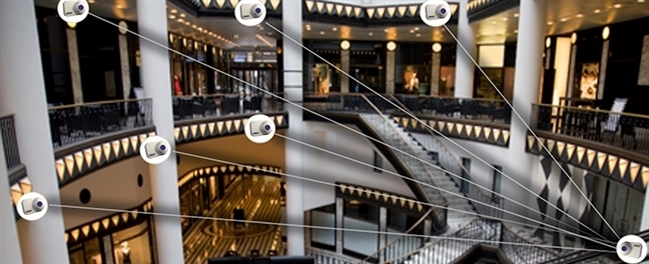
offers the appropriate solution for the outdoor Smoke Imaging Detection (OSID) sensors from fire detection and alarm systems that will be designed and implemented in wide outdoor areas with high floor heights such as airports, atria, lobbies, storage areas, industrial facilities and production areas, amphitheaters, concert halls, areas that are difficult to access, shopping malls, customer circulation areas, exhibition halls, fair areas.
In TS CEN/TS 54-14 A.6.4.1 General - Schedule A.1, the operating radius and ceiling height limits of the detection devices to be used are given. According to the Schedule A.1; point smoke detection sensors cannot be used in the areas with a floor height of more than 11 meters (except for special applications). In the table given, the ceiling height limits for the beam detectors are given within the range of 11 meters to 25 meters (including 25 meters).
The OSID system measures the level of smoke entering the reflected rays inside the protected area. A single OSID receiver can detect up to seven transmitters to cover a wide area.
Using two different wavelengths to detect particles, the system can distinguish particle sizes. The shorter UV wavelength interacts strongly with both small and large particles, while the longer IR wavelength is affected by large particles. Thanks to the double-wavelength distance loss calculations, the detector can calculate repeatable smoke detection without alerting fixed objects that close the dust and beam.
Ultraviolet (UV) and infrared (IR) help determine actual smoke with wavelengths outside the visible range. Thus, when faced with larger objects such as insects and dust, it reduces false alarms.
Thanks to an optical image processing unit inside the OSID receiver, the detector can detect and track high-density transmitters at wider angles. At the same time, the system may allow much less precise layout/installation and compensate for shifts caused by stretches in the building structure. The receivers (emitters) can be positioned at different elevations and then the receiver (emitter) can be added to an installed system.
Thanks to optical filtering, high-speed image acquisition and intelligent software algorithms, the OSID system has a high level of stability and sensitivity to high illumination differences.
The table below shows the operating distances and viewing angles of the OSID detectors.
|
Receiver |
Angle of View |
Detection Distance |
Max. Number of transmitters |
||||
|
Horizontal |
Dikey |
Standard Power |
High power |
||||
|
Min |
Maks |
Min |
Maks |
||||
|
10° |
7° |
4° |
30 m |
150 m |
- - |
- - |
1 |
|
90° |
80° |
48° |
6 m |
**34 m |
12 m |
**68 m |
7 |